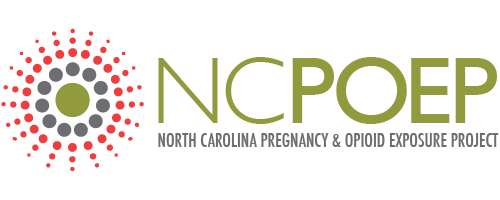Please see the Clinical Guidelines for the Use of Buprenorphine in the Treatment of Opioid Addiction[1] for detailed information regarding the choice of medication and how to determine whether a person— regardless of pregnancy status — is a candidate for buprenorphine treatment.
Choosing the best medication for treatment during pregnancy is a discussion ultimately best suited to the medication provider and the woman. Recognizing that many women will look to their obstetric care provider before initiating medication, it might be helpful for the medication provider and obstetric provider to discuss the treatment plan before presenting the final recommendation to the woman.
Methadone is the medication of choice due to the substantial data on long-term neonatal outcomes. Buprenorphine is a reasonable alternative for select patients. The discussion and decision for medication should be reviewed with the woman and documented in her chart. Please see Appendix 2 for a sample Patient Treatment Information sheet regarding medication during pregnancy, which can be reviewed with the woman.
When methadone is not available and a woman is not an optimal candidate for buprenorphine treatment, providers may want to consider a stepwise approach of initiation with buprenorphine, with very close and frequent follow-up, used in conjunction with substance-use disorder counseling. A different level of treatment, including residential or an opioid treatment program that offers buprenorphine, could be considered for women who have difficulty in adhering to office-based buprenorphine treatment.
When you are uncertain about the optimal medication for a woman who is pregnant, these guidelines recommend consultation with an experienced provider to assist you in this decision-making process.
Examples of when a provider and a woman might choose one treatment over another are as follows:
Methadone if:
- Unstable living situation
- Abused buprenorphine (snorting, intravenous use)
- Declines/non-compliant with counseling
- Inability to coordinate ancillary services
- In a mandatory recovery program (e.g., parole)
- Non-compliant with obstetric or pediatric care
- If a woman has ongoing use of multiple substances, including alcohol or benzodiazepines, buprenorphine in an opioid-treatment program is considered the safer choice than methadone in an opioid-treatment program.
Office-based buprenorphine if:
- Informed consent regarding new medication for pregnancy/ lack of data on long-term outcomes
- Opioids are the only substances of abuse
- Stable living situation
- Accepts counseling
- Can coordinate ancillary services or is engaged in a community-based program that will do so
- Compliant with obstetric and pediatric care
- No alternative is available and the patient understands treatment may be initiated on a trial basis
For consultation regarding residential and outpatient treatment resources, the Perinatal Substance Use Specialist at 1-800-FOR BABY can be contacted to assist in triaging a specific woman’s situation.



